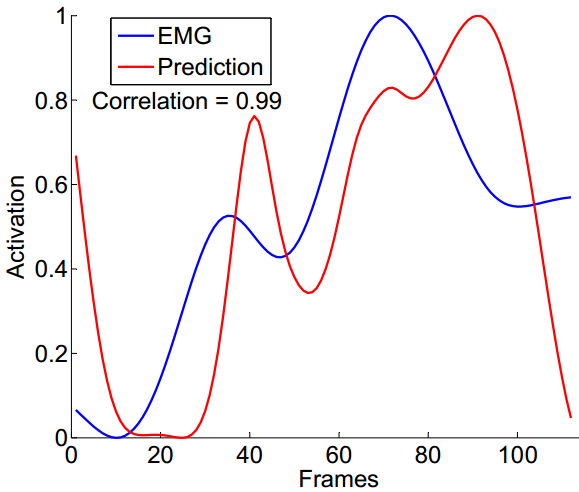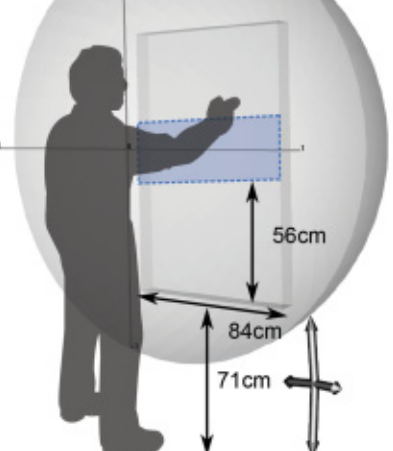max planck institut informatik

Biomechanics-related projects
Is Motion-Capture-Based Biomechanical simulation valid for HCI Studies? Study and implications
Is Motion-Capture-Based Biomechanical simulation valid for HCI Studies? Study and implications
Abstract
Motion-capture-based biomechanical simulation is a non-invasive analysis method that yields a rich description of posture, joint, and muscle activity in human movement.
The method is presently gaining ground in sports, medicine, and industrial ergonomics, but it also bears great potential for studies in HCI where the physical ergonomics of a design is important.
To make the method more broadly accessible, we study its predictive validity for movements and users typical to studies in HCI.
We discuss the sources of error in biomechanical simulation and present results from two validation studies conducted with a state-of-the-art system.
Study I tested aimed movements ranging from multitouch gestures to dancing, finding out that the critical limiting factor is the size of movement.
Study II compared muscle activation predictions to surface-EMG recordings in a 3D pointing task. The data shows medium-to-high validity that is, however, constrained by some characteristics of the movement and the user.
We draw concrete recommendations to practitioners and discuss challenges to developing the method further.
Materials
 |
PDF copy of the
paper: Is Motion-Capture-Based Biomechanical simulation valid for HCI Studies? Study and implications Bachynskyi, M., Oulasvirta, A., Palmas, G., Weinkauf, T. Proceedings on Human Factors in Computing Systems ACM, 2014 (Adobe Acrobat PDF, 1.8 MB) |
| |
Supplementary material: Related work table (Adobe Acrobat PDF, 0.06 MB) |
 |
Matlab scripts: Matlab scripts will come soon (Coming soon, ) |
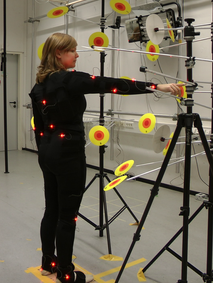 |
The source data: Motion capture and EMG data of one of the participants (the rest available upon request) Matlab .mat files containing arrays with motion capture and emg data |
 |
The simulated data: Data generated by biomechanical simulation for corresponding trials (OpenSim .sto files) |
Links
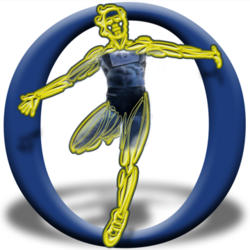 |
Simulation tool: OpenSim official web-page |
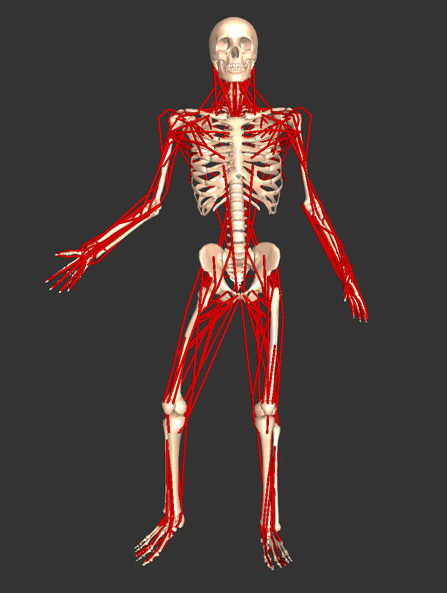 |
Musculoskeletal model: Full-Body model official web-page |
Citation
Bibtex:
@inproceedings{Bachynskyi:2014:MCB:2556288.2557027,
author = {Bachynskyi, Myroslav and Oulasvirta, Antti and Palmas, Gregorio and Weinkauf, Tino},
title = {Is Motion Capture-based Biomechanical Simulation Valid for HCI Studies?: Study and Implications},
booktitle = {Proceedings of the SIGCHI Conference on Human Factors in Computing Systems},
series = {CHI '14},
year = {2014},
isbn = {978-1-4503-2473-1},
location = {Toronto, Ontario, Canada},
pages = {3215--3224},
numpages = {10},
url = {http://doi.acm.org/10.1145/2556288.2557027},
doi = {10.1145/2556288.2557027},
acmid = {2557027},
publisher = {ACM},
address = {New York, NY, USA},
keywords = {biomechanical simulation, empirical methods, optical motion capture., physical ergonomics, validity},
}
Contact
If you have any
question about the project, don't hesitate to write an email!
Myroslav Bachynskyi
Max-Planck-Institute for Informatics
Cluster of Excellence on "Multimodal Computing and Interaction"
mbachyns (at) mpi-inf (dot) mpg (dot) de
